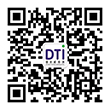Jigsaw puzzle toy US ASTM F963 testing requirements
Date:2025-02-21 10:54:53 Classification
:【question】 Visits:
According to the US ASTM F963 standard (the current version is ASTM F963-23), jigsaw puzzles as children's toys must meet the following testing requirements to ensure their safety and compliance:
I. Physical and mechanical performance test
1. Structural stability test
- Impact test: evaluate whether the toy breaks and produces sharp edges or fragments when impacted.
- Drop test: simulate multiple drops from a height of 85cm (applicable to children under 36 months old) to check whether the parts fall off to form small parts.
- Tension and pressure test: apply 90N tension or 110N pressure to the puzzle parts to verify whether swallowable small parts (such as button-shaped parts with a diameter of ≤31.7mm) are produced.
2. Edge and tip evaluation
- Use a sharp edge tester to detect whether the edges or seams of the puzzle meet the "no sharp edges" requirement to prevent scratch risks.
2. Combustion performance test
- Horizontal burning speed: If the puzzle contains flammable materials such as plastics and textiles, the burning speed must be ≤2.5mm/s (tested according to 16 CFR 1500.44 standard).
3. Chemical performance test
1. Heavy metal migration
- The surface coating needs to detect 8 soluble heavy metals (lead, cadmium, mercury, arsenic, etc.), the lead limit is ≤90ppm, and the limit of other elements refers to ASTM F963-23 Appendix A.
2. Total lead content
- All materials (including plastics, wood, coatings) must comply with CPSIA requirements, and the total lead content is ≤100ppm.
3. Phthalates
- The total content of 6 plasticizers such as DEHP and DBP is ≤0.1% (for soft plastic parts).
4. Label and instruction requirements
- Age warning: If it contains small parts, it must be marked with a warning of "not suitable for children under 3 years old".
- Traceability label: The packaging must indicate the manufacturer information, production batch and statement of compliance with the ASTM F963 standard.
V. Exemptions and exceptions
- Models not for children: If they are clearly marked as "collectibles for ages 14 and above" and have no play function, they can be exempted from testing.
- Materials that have passed CPSC certification: If the supplier provides a valid test report, some tests can be simplified.
Summary and suggestions
Companies need to choose CPSC-approved laboratories (such as Dezewei) for testing, integrate ASTM F963 and CPC certification processes, and pay attention to the update of the ASTM F963-23 version that will take effect in 2024.




 Shen Gongwang Security: 44030602006947
Shen Gongwang Security: 44030602006947